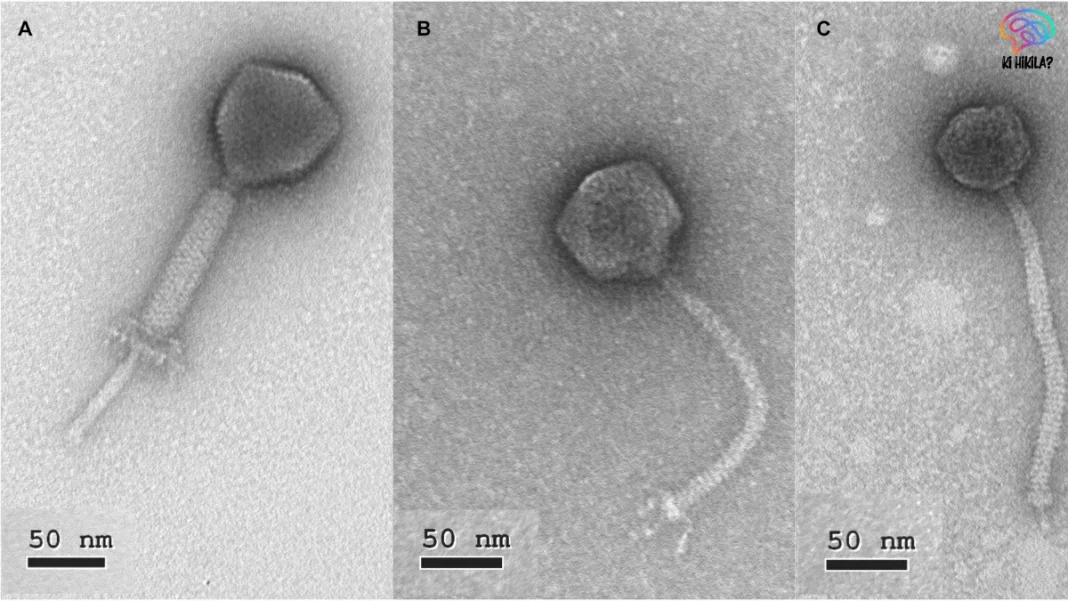PelV-1 Virus Discovery has captivated the scientific community after researchers in the North Pacific Subtropical Gyre identified a giant virus infecting the plankton Pelagodinium. This virus stands out for its unusually long tail, measuring 2.3 micrometres—approximately 19 times the length of the coronavirus responsible for COVID-19. The discovery not only provides new insights into marine virology but also underscores the ecological roles viruses play in ocean ecosystems.
Discovery and Habitat
PelV-1 was first detected at Station ALOHA, located north of Hawaii, during a routine seawater sampling 25 metres below the surface. Scientists isolated the dinoflagellate Pelagodinium and found the virus attached as a “hitchhiker.” Viruses targeting dinoflagellates are extremely rare, with only two other large DNA viruses known to infect this group. The presence of PelV-1 in such a well-studied site emphasizes the vast, largely unexplored viral diversity in the oceans.
Unique Morphology
One of the most striking features of PelV-1 is its morphology. The virus possesses a 200-nanometre capsid and a tail extending 2.3 micrometres—the longest viral appendage ever recorded. Most viruses either lack tails or have tiny ones, making PelV-1 an extraordinary outlier. Time-lapse imaging shows the tail actively attaching to plankton cells during infection, but disappearing once inside the host, suggesting that the tail forms only during the extracellular stage to facilitate entry. Scientists speculate that this unique structure may enhance the virus’s ability to infect its host efficiently.
Genomic Features

PelV-1 also surprises with its genomic complexity. Its genome contains 459,000 base pairs and 467 genes, including several typically found only in living cells. Among these are genes for energy production, light-harvesting proteins, and rhodopsins—specialized molecules that capture sunlight. These features suggest that PelV-1 may harness solar energy to aid in its lifecycle, consistent with its presence in the sunlit layers of the ocean. Such metabolic capabilities challenge conventional distinctions between living and non-living entities, positioning giant viruses like PelV-1 at the frontier of virology research.
Ecological Importance
Understanding PelV-1 Virus Discovery is critical for marine ecology. Pelagodinium, the virus’s host, is a key phytoplankton species consumed by zooplankton and small fish, forming a foundational link in the marine food web. Infection by PelV-1 can influence energy flow, nutrient cycling, and potentially the dynamics of algal blooms. Some of these blooms are harmful to marine life and human health, making the study of viruses like PelV-1 crucial for predicting and managing ecological impacts.
Related Viruses and Future Research
Alongside PelV-1, scientists discovered a less common virus called co-PelV in the same plankton culture. Co-PelV lacks a tail but carries metabolic genes that may influence host behavior and energy use. Future research aims to uncover the mechanisms behind PelV-1’s tail assembly, its precise role in infection, and whether other long-tailed viruses exist in the world’s oceans. These investigations could redefine our understanding of virus-host interactions in marine environments.
Significance in Virology
The discovery of PelV-1 adds to the growing body of knowledge about giant viruses, first identified more than 20 years ago. Giant viruses are significantly larger than typical viruses and carry thousands of genes, some of which confer functions previously thought exclusive to cellular life. Each new discovery, including PelV-1, challenges traditional classifications and highlights the complexity and diversity of viral life on Earth.
Conclusion
The PelV-1 Virus Discovery represents a major milestone in marine virology, offering insights into virus morphology, genetics, and ecological roles. With its unprecedented tail, large genome, and ability to manipulate host metabolism, PelV-1 reshapes our understanding of the microbial world. Ongoing studies of this giant virus will not only expand knowledge of oceanic ecosystems but also influence broader research in virology, ecology, and evolutionary biology. As scientists continue to explore the oceans, discoveries like PelV-1 remind us of the hidden complexity of life beneath the waves.



